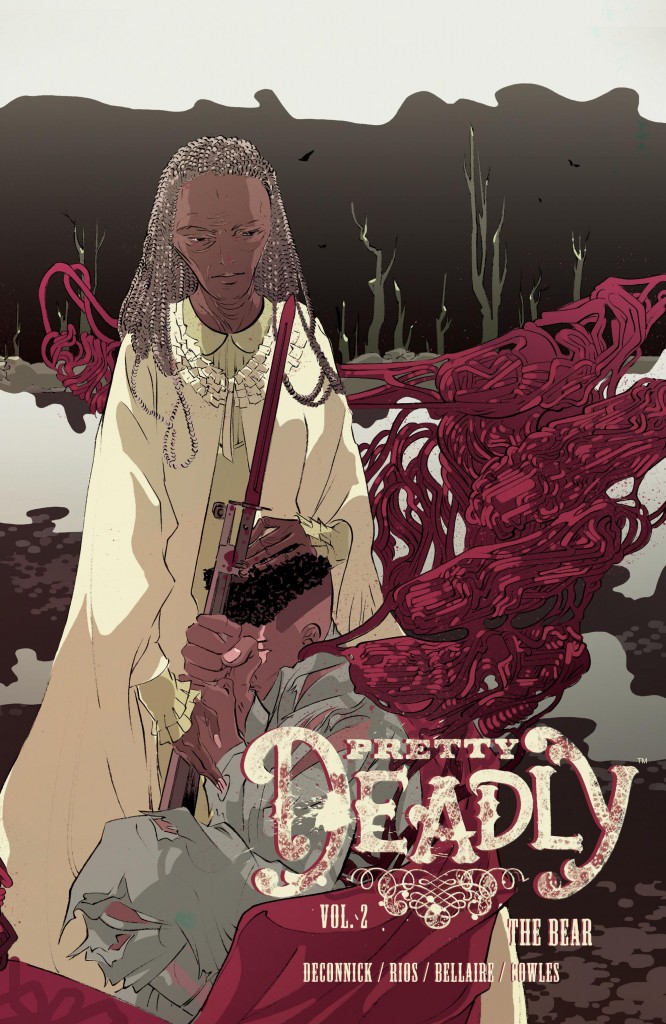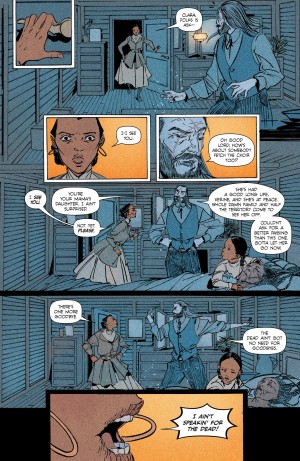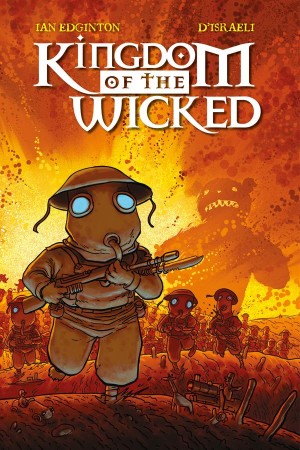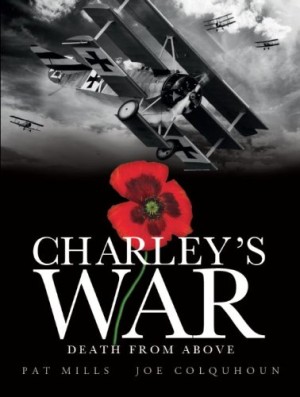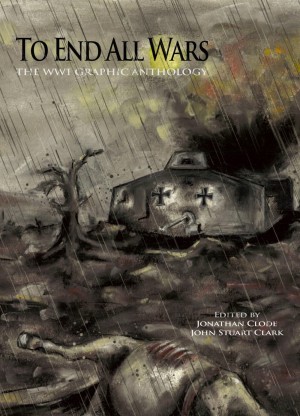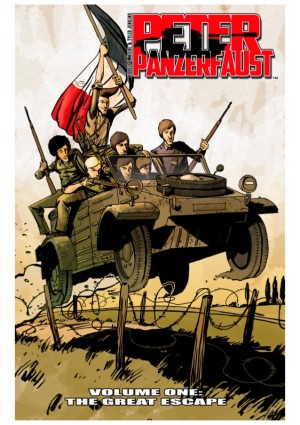Review by Frank Plowright
The opening volume of Pretty Deadly was a frustrating combination of often beautiful delicate artwork, overlaid with soundbites strung together with what may or may not be symbolic representations. For those unable to get enough of that mixture there’s plenty more in The Bear, although this time accompanied by some moments of clarity.
If anything the pages Emma Rios produces are even more stunning than previously. They’re ornately designed and the astute colouring of Jordie Bellaire plays a large part in providing their decorative quality. Shifting the ongoing narrative forward several decades from the era of the old American West to World War I, enables the paraphernalia and soldier’s accessories, particularly the gas mask, to prompt memorable images. These extend back into the World Garden, the eventual repository of all life. The sheer breadth of skill aligned with beauty is breathtaking, to the point where abject horror still looks beautiful, and the art drags the story along.
We return to characters from the first volume, now older. Sarah is just about holding on to life, and makes a bargain, accruing an extra month in order that she might see her son one last time. Cyrus serves overseas with the American army, enduring trench warfare, and yet intervention may have a larger price. Sissy has now transformed into an immortal force, and the purpose of what are known as the reapers is hinted at.
There are some concessions from Kelly Sue DeConnick. As previously each chapter opens with a fable involving animals, and we now see both the teller of those fables and the questioner. Fables are also interspersed between the fragments of comprehensible story, that of a farmer losing his horse working particularly well at the book’s midpoint. We see the purpose of myths, feeding a garden and in turn sustaining those with stories to provide, but it’s all very wispy, with one person’s interpretation as valid as another’s. The storytelling style is given some substance, though, by a selection of small insights provided by DeConnick in the back pages, referring to moments from her past. They connect in a manner that Pretty Deadly begins to connect in The Bear, not obviously to anyone but the writer until pointed out.
With this continuation it’s become apparent that Pretty Deadly works with the essence of storytelling, posing questions about it along the way. We’re asked at what point a story ends. Does it ever? Should one look to stories for answers in life? Can misfortune be good? Where stories connect is fundamental. It’s clear that DeConnick has something to say, and while there’s no necessity to spell everything out for a reader, for many Pretty Deadly will remain style over-riding content.
